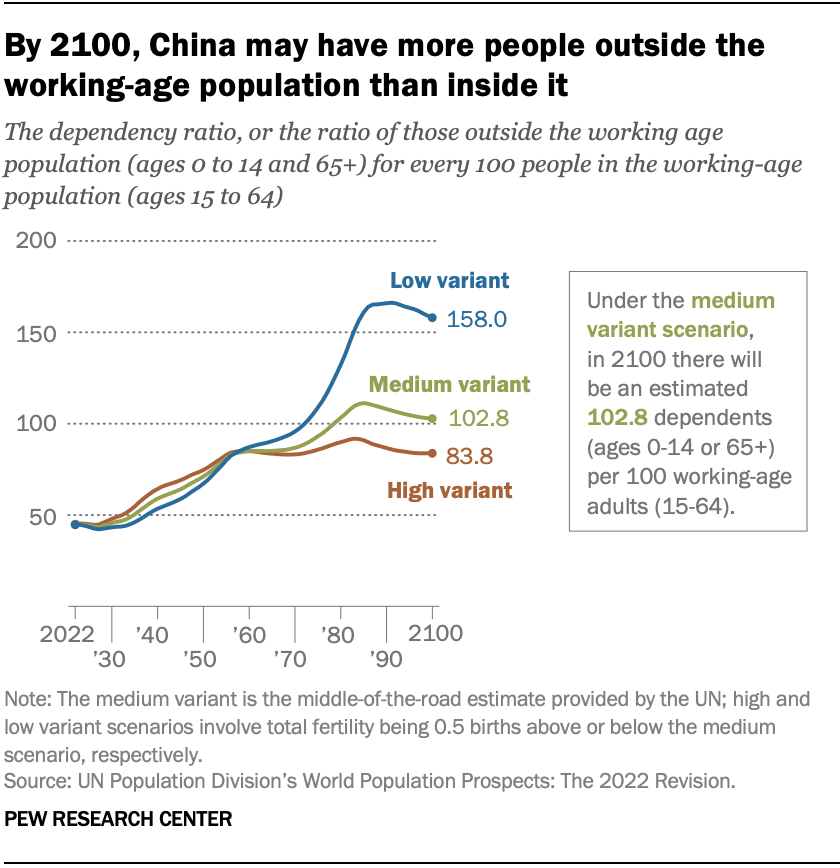Would like to see the data you're espousing regarding "fear of fewer replacement babies" and your claim that it's "centered around supporting long-lived elderly populations." Please enlighten me/us.
Gladly. This is typical of the reasons cited for countries starting to sweat low birth rates:
Key facts about China’s declining population
China has a rapidly aging population. According to
Chinese state media, China is already approaching a “moderately aging” scenario, in which 20% of its population is ages 60 and older. By 2035, that percentage is expected to rise to 30%, or more than 400 million people.

By 2100, China also appears poised to roughly double its “
dependency ratio” – the proportion of its population that is outside working age (either ages 0 to 14 or ages 65 and older), compared with the proportion that is working age (15 to 64). This is even true in the UN’s “low variant” projection. In fact, based on the UN’s middle-of-the-road estimate, there will be more Chinese people outside the working-age population than in it – a dependency ratio of 101.1 – by the year 2079.
Impact of falling birth rates - Economics Help
Problems of falling birth rate
Increased share of retired people. The most striking feature of a low birth rate is that it will create a rising share of people over 65, and an inverted population pyramid. In the 1960s, there were six people of working age for every retired person. In 2021, that is three-to-one. By 2035, there will be two working-age persons for every retired person (
We Forum). This has profound implications for health care, government spending and tax revenues.
Pressure on government spending. With an ageing population, the government will need to spend more on pensions and health care (old people disproportionately use health care services and social care). At the same time, there will be fewer young people to pay income tax. It gives the government an unwelcome headache and may require higher taxes on a shrinking workforce. If there is strong economic growth and the population decline is mild, this ageing population will be manageable. However, there are concerns that the post-war rates of economic growth have slipped away and we are entering a period of
secular stagnation – so we cannot rely on high growth
The costs of an ageing population will be offset to some extent by less spending on education for young people. But, the extra spending on health and social care will far outweigh the lower spending on education.
Less innovation. Young people are more likely to be entrepreneurs, innovators and take risks to develop new technologies and business. With less young people, the potential ‘brain pool’ will be less – giving relatively few ideas for improving living standards.


